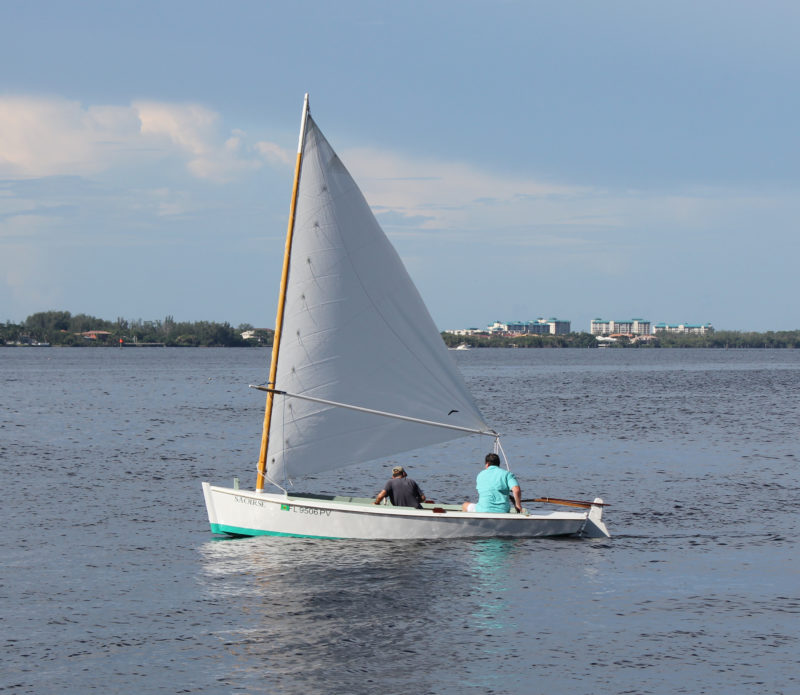 Chris Chapman
Chris ChapmanThe sail SAOIRSE carries is easily furled and the rig dropped to allow passage under a low bridge on the way home.
Kevin Moroney grew up in South Salem, New York, not quite 10 miles south-southwest of Danbury, Connecticut; his home was near Truesdale Lake, a finger of water just shy of a mile long. He watched rowing and sailing boats plying the lake and longed to have a boat of his own, but only the homeowners with lakefront property were allowed to have them. He carried a dream of building a boat for himself for half a century.
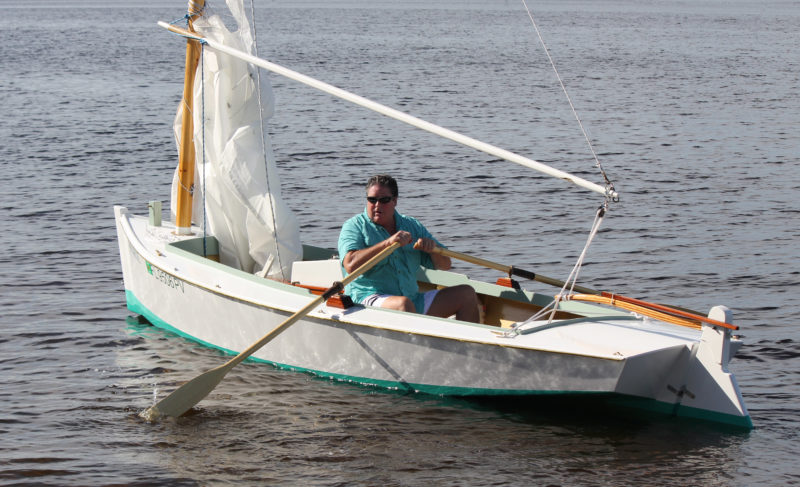 Chris Chapman
Chris ChapmanKevin takes to the oars on his way out to sail the waters around Cape Coral, Florida
Kevin watched as his lifelong friend Robert Greco built a 16′ Glen-L runabout with his father and another smaller runabout for his grandkids, and seeing that it was possible to build a boat, he decided it was finally time to start. He and his wife Jennifer live on Florida’s west coast where the waters are fringed with shallow bays and dotted with oyster beds and islets, so he needed a shallow-draft boat. Their home is on one of the many canals in Cape Coral, and to get to the Caloosahatchee River and out to open water the boat would have to pass under a low fixed bridge. It had to have a mast he could easily step and unstep by himself.
His search for a suitable boat led him to sharpies. Like Kevin, sharpies got their start in the Connecticut and New York area and made their way south to Florida. He read about Commodore Ralph Munroe and the two New Haven–style sharpies he had built on Staten Island and brought to Florida: KINGFISH in 1881 and EGRET in 1886. Kevin then read Reuel Parker’s The Sharpie Book. In it he found a Modified Sharpie Skiff. At 17′10″ by 5′6″, it was the largest boat in the book that would fit in his 20′ garage. The skiff is unusual among sharpies as it has a V-bottom for its entire waterline length. Similar boats appear in Chapelle’s American Small Sailing Craft and are categorized as (Chesapeake) Bay skiffs: “The one-sail skiffs were single-handers and were very frequently smart sailers, though not heavily canvased.” Kevin knew he would build only one boat in his lifetime and wanted it to be the right one. The Sharpie Skiff had a rich history and tradition behind it and was well suited for his home waters.
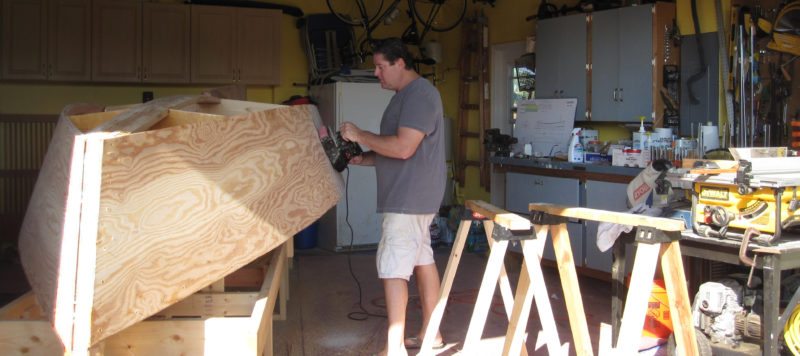 Jennifer Moroney
Jennifer MoroneyThe bulkheads show the shallow V in the bottom of the sharpie.
Starting a boatbuilding project in earnest is often the hardest part, but Kevin found a solution for that: “Just order the lumber and when it shows up at the front of your house, you’ll look like an idiot if you don’t start building.” When his pile of plywood arrived, he set to work. The sharpie’s hull is marine-grade Douglas-fir plywood (½″ on the bottom, 3/8″ on the sides), the deck ¼″ okoume plywood, all sheathed in 6-oz fiberglass cloth and epoxy. The centerboard trunk and stern sheets are sapele; the laminated mast is southern yellow pine. He built the boat mostly by himself, but Jennifer and a few friends pitched in when two hands weren’t enough for the tasks. His friend Patrick, from Ireland, “helped me fit the stern on the strong back, rip some wood, and described what a good beer should taste like. He also helped me understand my Irish wife.”
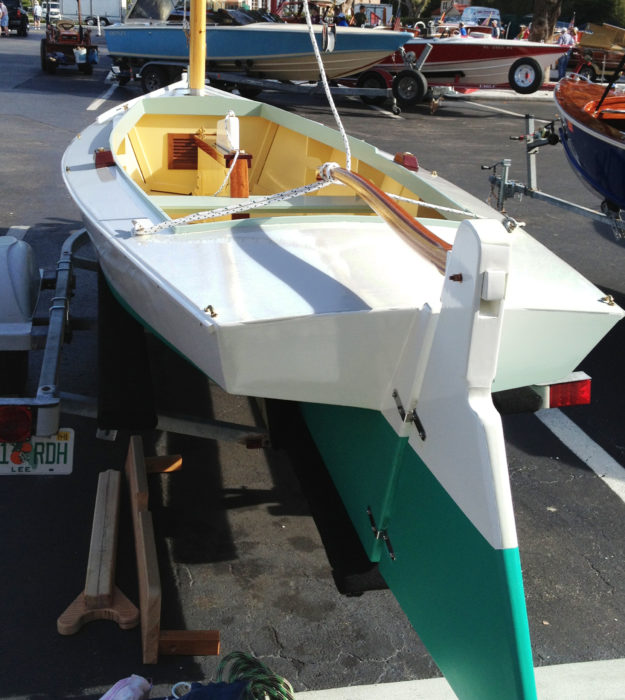 Kevin Moroney
Kevin MoroneyAfter finishing the boat, Kevin showed it at a the Thomas Edison and Henry Ford Wooden Boat Festival in Fort Myers, Florida. He launched for the first time a few days later.
After working on the boat off and on for 26 months, it was ready to launch. He christened the boat SAOIRSE. Pronounced seer-sha, it’s an Irish feminine given name meaning freedom.![]()
Have you recently launched a boat? Please email us. We’d like to hear about it and share your story with other Small Boats Monthly readers.
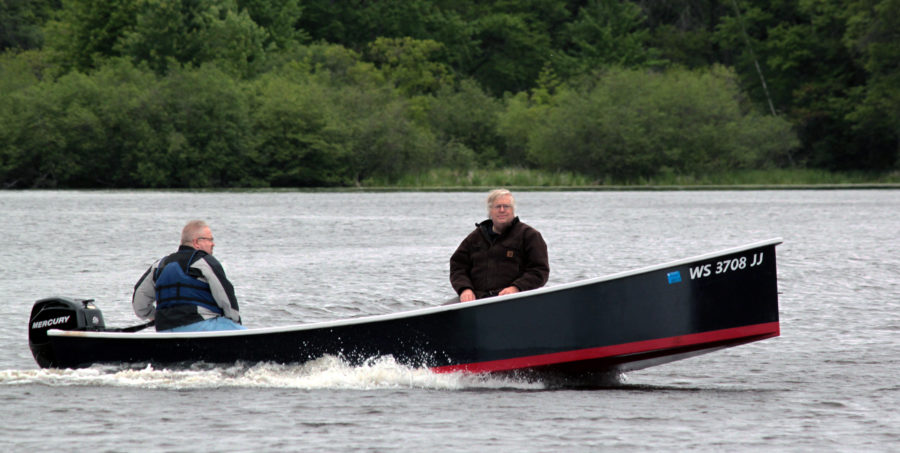
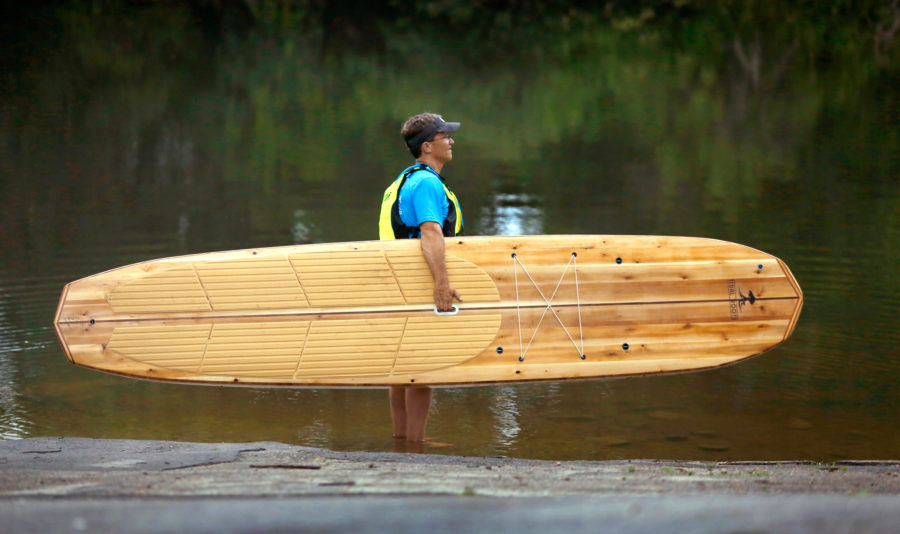
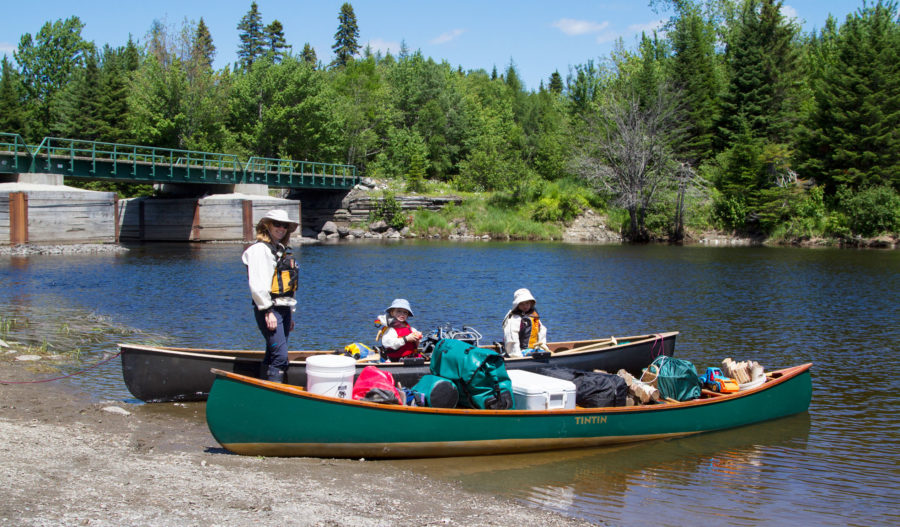
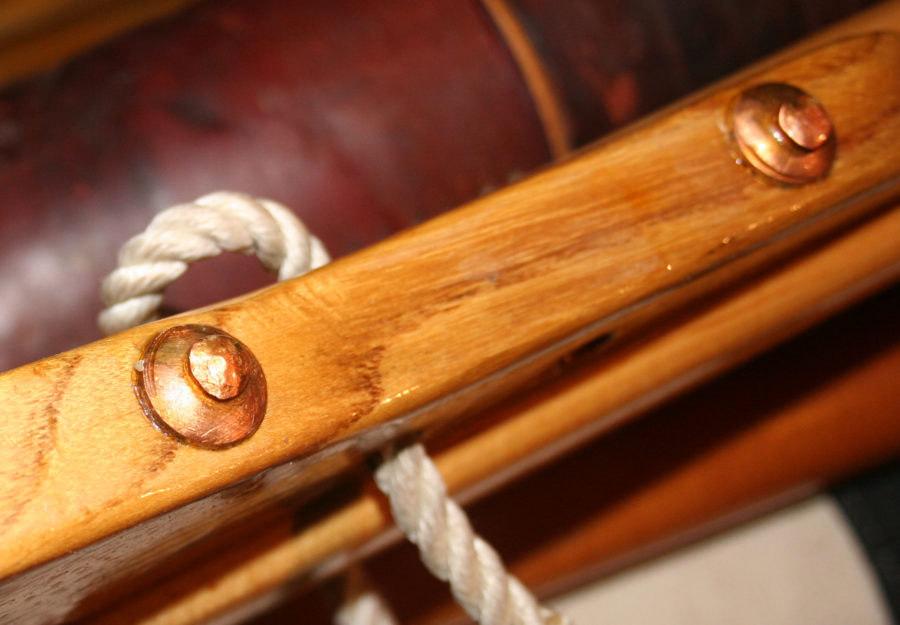
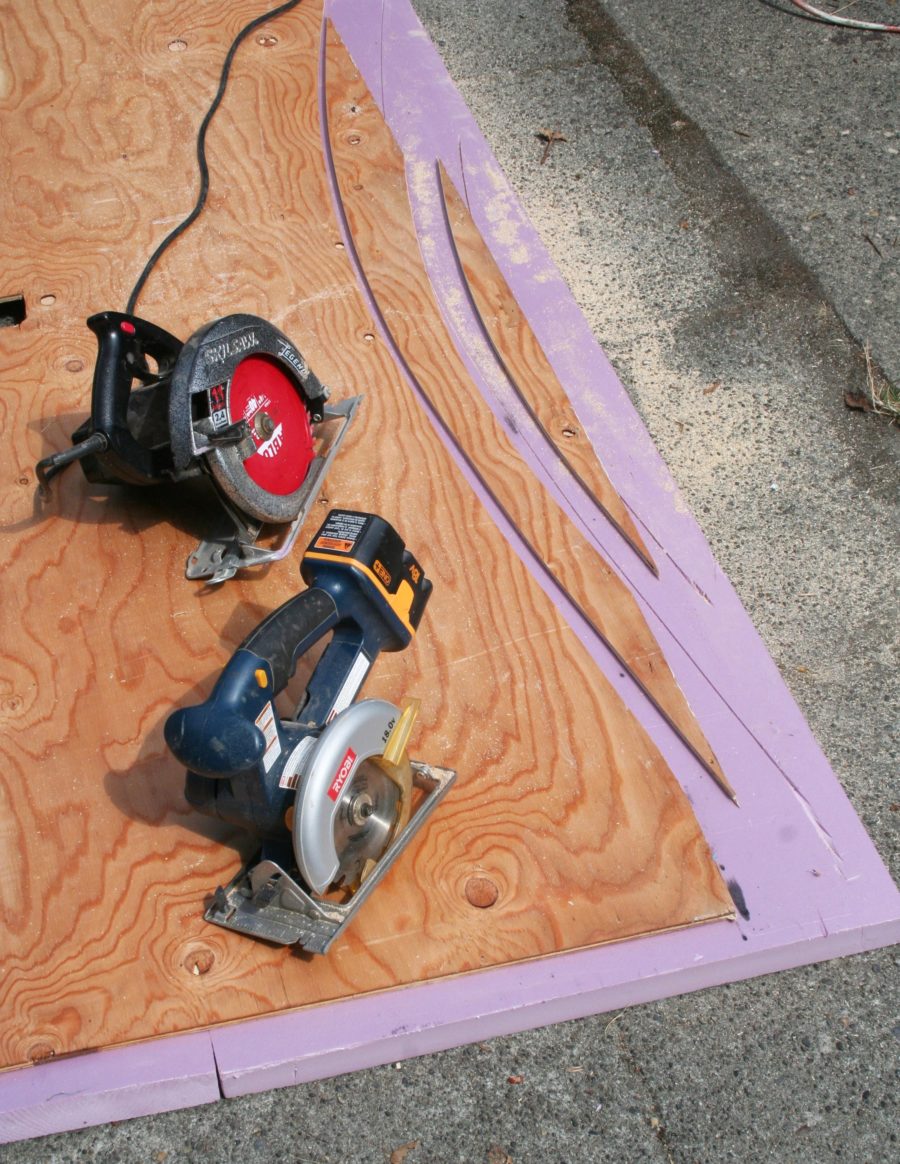
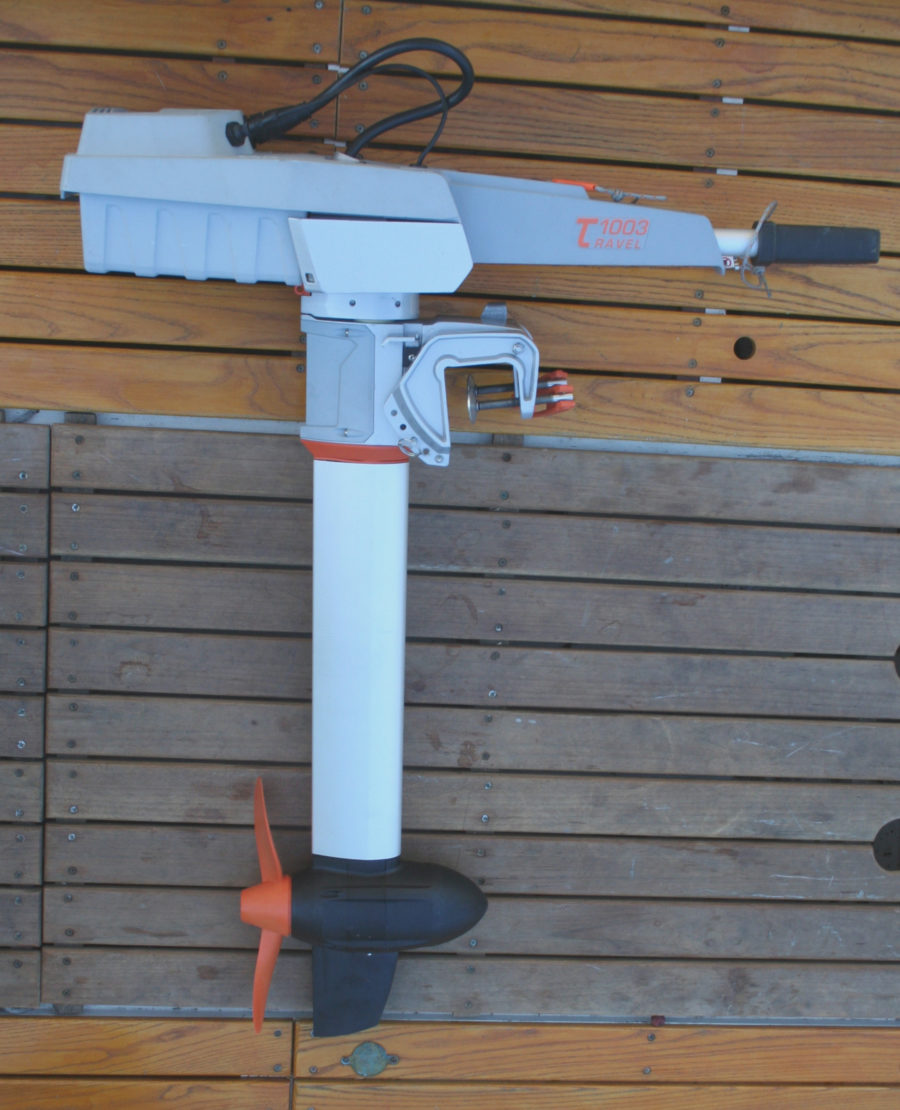
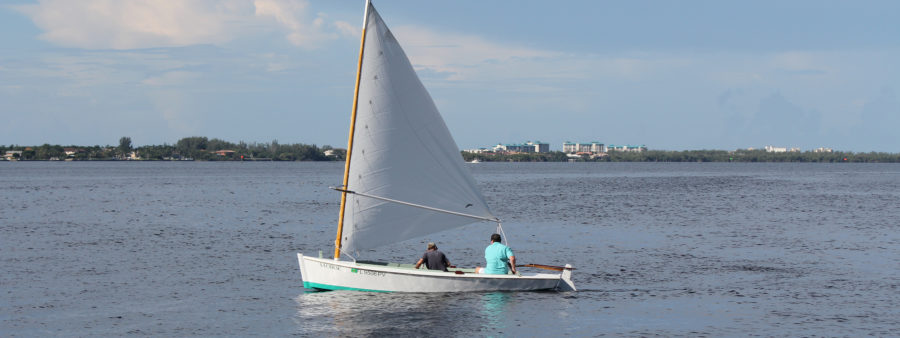
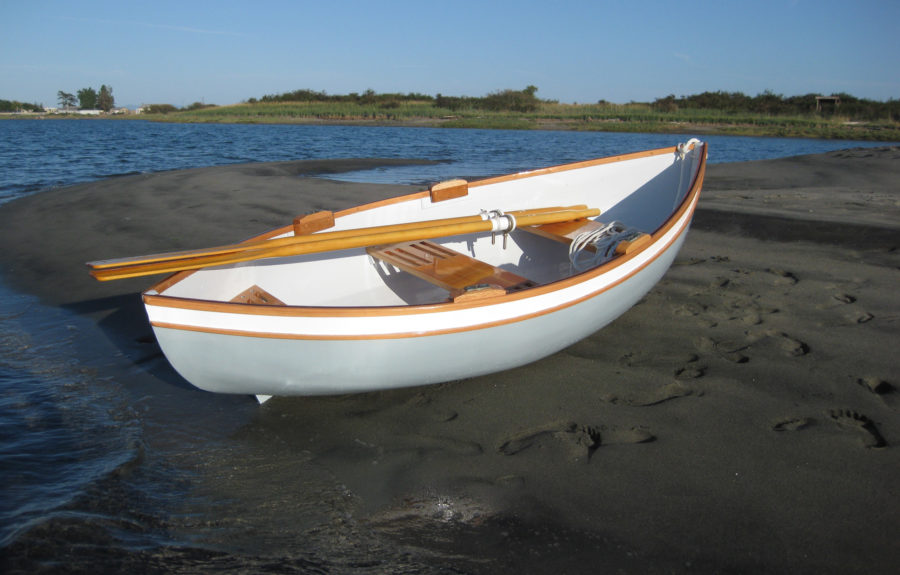
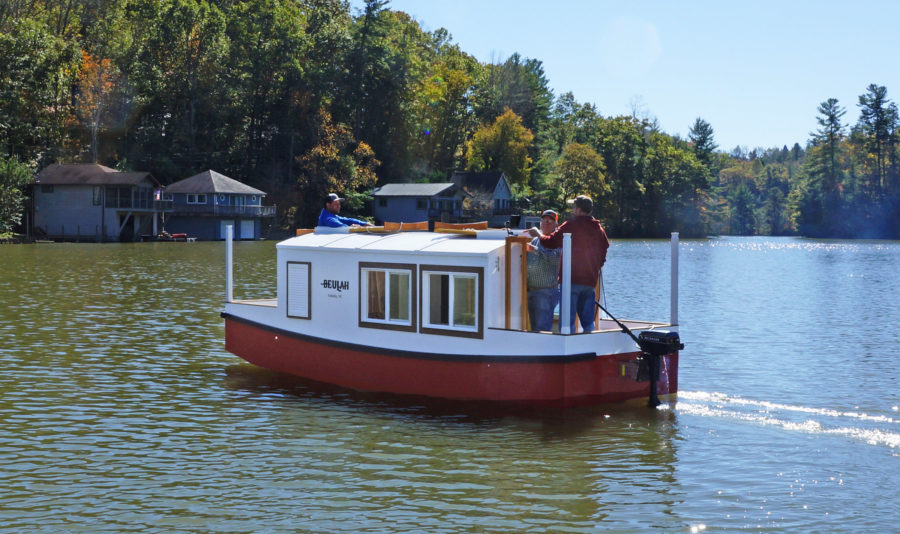
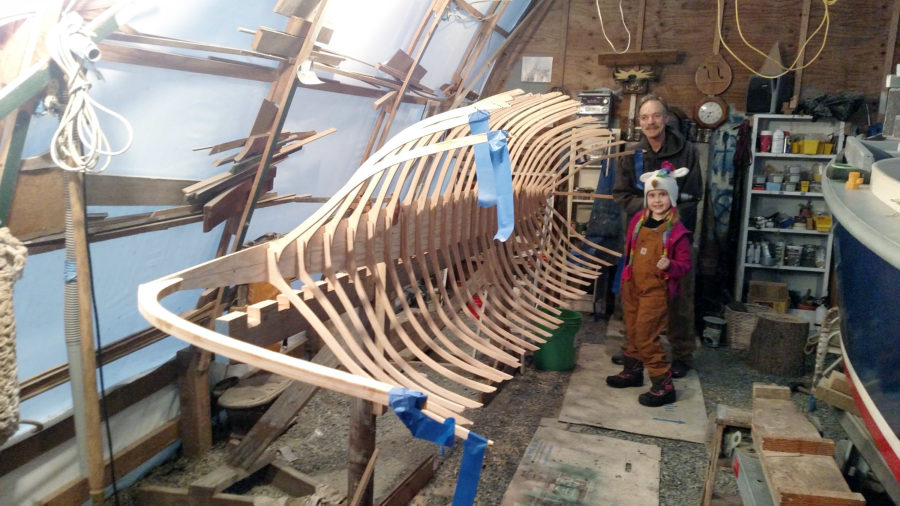
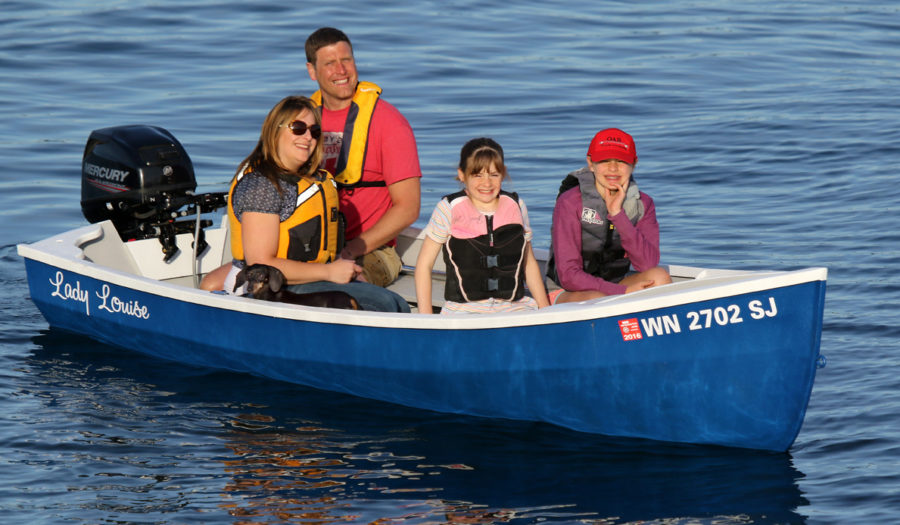
Lovely boat and a great name.I imagine you know about Conor O’Brien, if not, look him up.
Calm seas, Doug
(Editor’s note: Sailing the yacht SAOIRSE, Conor O’Brien was first Irishman to circumnavigate the globe, 1923.)
Mmm, what a sweet looking boat. I really like the deeply shaped sail. It looks powerful in light wind. I imagine you would flatten it out with the snotter in strong winds. How does that work out? And how does she sail in a reefing breeze?
That’s a beauty. You will have years of enjoyment. Well done.
Marvelous accomplishment. You’re an inspiration, sir. Fair winds.
Thanks for the nice comments. SAOIRSE is very stiff in a strong breeze. I had her out in 25-knot winds with gusts above 30 and she sails very straight and digs in for the ride. There was no need to reef and we were rarely sitting on the rails. Pulling the snotter very tight held the sail flat. She likes the wind and is very balanced and relaxed. She weighs over 900 lbs so that helps too.
Congratulations Kevin on a fantastic project. The quality of construction and selection of materials is second to none. Happy sailing!
Great looking boat and nice article. Congratulations on a wonderful accomplishment. I was glad that a video was included of the boat sailing—a very nice complement to the article. Thank you.